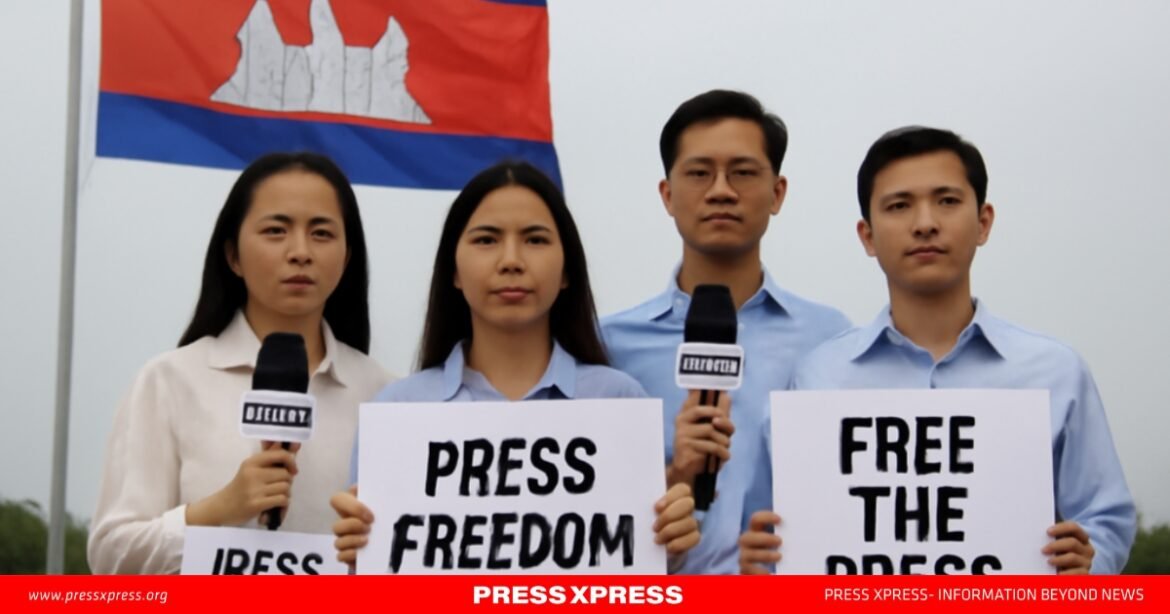Ahead of World Press Freedom Day 2025, Tep Asnarith, Undersecretary of State and Spokesperson for Cambodia’s Ministry of Information, announced a 6.2% improvement in media freedom and journalist safety compared to the previous year. This improvement, grounded in a government-backed survey, provides a data-driven analysis of Cambodia’s evolving media landscape.
Survey Methodology: Robust Data Collection
The Ministry’s report is based on a scientific survey with 500 questionnaires distributed across 25 provinces and Phnom Penh. A total of 467 responses were gathered from journalists and media stakeholders, ensuring a broad and diverse sample. This methodology lends credibility to the data, making it more reliable compared to smaller or less representative surveys.

Key Findings: Improved Media Freedom
The report reveals a 6.2% improvement in media freedom from last year’s score of 79.8%. Tep Asnarith emphasized that the figures reflect real-world experiences. Key findings include:
- 86% of respondents reported enjoying full freedom and safety in their journalistic duties.
- 81.4% rated press freedom as “very good”, and 72.2% as “good”. Only 9.2% rated it as “excellent.”
These results suggest that the majority of journalists feel confident and secure in their ability to report effectively.

Journalists’ Perception of Media Freedom
The survey also assessed journalists’ perceptions of the media environment in Cambodia. Findings include:
- 86% of journalists felt they had access to information sources without significant obstacles.
- Over 80% reported no external interference or threats while working.

These responses reflect an increasingly open and secure environment for journalists, especially when compared to more restrictive media climates in the region.
Government’s Critique of External Reports
Tep Asnarith also addressed external reports that portray a less favorable view of Cambodia’s media freedom. He criticized these assessments for relying on small, unrepresentative samples, which he argued do not reflect the broader realities on the ground. He suggested that these reports could be politically motivated and do not accurately represent the experiences of the majority of journalists and media professionals in Cambodia.
This critique highlights the ongoing tension between government-backed assessments and international reports. While the government focuses on positive changes, external organizations continue to express concerns about press freedom restrictions, particularly for journalists covering sensitive political issues.
Comparative Data: Press Freedom in Context
While Cambodia’s improvement in media freedom is noteworthy, it’s important to compare it with international data. According to Reporters Without Borders (RSF), Cambodia ranked 142nd out of 180 countries in the 2024 World Press Freedom Index, signaling ongoing challenges. However, the Ministry’s findings suggest a more optimistic view, based on direct feedback from journalists in the field.
This difference reflects the complexity of measuring press freedom. International rankings often emphasize legal restrictions and government control, while the Ministry’s survey focuses on journalists’ personal experiences, providing a more localized perspective.
Implications for Cambodia’s Media Landscape
While the data presents a positive trend, several factors must be considered:
Sustainability of Progress: The survey shows a significant improvement, but long-term sustainability remains uncertain. Media freedom is not only about safety but also about independence, transparency, and space for critical reporting.
Political Influence: Despite improvements, there are concerns about government control over media narratives. Journalists working on sensitive stories, especially regarding government accountability, still face legal risks, including defamation suits.
Legal and Institutional Framework: Cambodia’s legal environment remains crucial. Laws like the Cybercrime Law and Telecommunications Law could limit press freedom if applied repressively. Ensuring journalists can work without fear of legal repercussions is vital.
The Ministry of Information’s report on media freedom and journalist safety reflects significant improvements, with 86% of journalists reporting safety and freedom in their work. These results suggest a more secure environment for journalists, in contrast to the challenges they have faced in the past. However, concerns about government influence on the media and the legal environment persist, making it clear that while progress has been made, the journey toward full media freedom is ongoing.
To maintain and build on these improvements, Cambodia must continue to promote a truly independent press, free from political pressures, and ensure legal protections for journalists. The government’s commitment to sustaining this progress will determine whether these improvements can become a lasting reality for Cambodia’s media sector.


